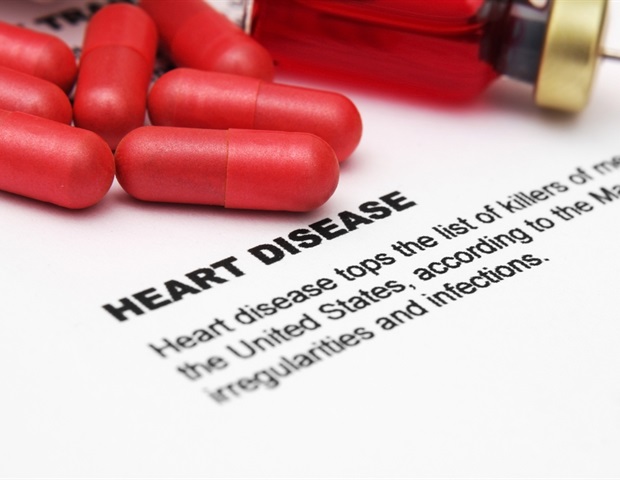Carotid artery plaque contains elevated micronanoplastics

People with plaque in the blood vessels of their neck have a higher amount of tiny plastic particles in those vessels compared to people with healthy arteries. This increase was significantly higher in people who had experienced a stroke, mini-stroke or temporary loss of vision due to clogged blood vessels, according to preliminary research presented at the American Heart Association's Vascular Discovery 2025 Scientific Sessions: From Genes to Medicine, April 22–25 in Baltimore. Micronanoplastics are tiny pieces of plastic created in industrial processes or from larger plastic objects as they degrade in the ocean or the soil. Micronanoplastics are not uniform in size and are a mixture of micro and nano plastic sizes. While microplastics are sometimes visible at less than 5 millimeters in size (5 millimeters is the size of a pencil's eraser), nanoplastics are microscopic (invisible to the naked eye), less than 1,000 nanometers across. This makes them more easily dispersed and able to penetrate cells and tissues in living organisms. Researchers suggest that terminology should gradually transition to nanoplastics because that is more precisely what is being studied. These types of plastics are commonly found in the environment, especially in ocean garbage patches. Over many years, these plastics break down, mix into the soil and water, and can build up in the food chain. Many people think that micro and nanoplastics mainly come from using plastic utensils, cutting boards, packaging, water bottles and other plastic items. However, the main source is the food and water we eat and drink." Ross Clark, M.D., M.B.A., R.P.V.I., lead study author, vascular surgeon-scientist, University of New Mexico in Albuquerque In 2024, researchers in Italy reported finding micronanoplastics in plaque from some people without symptoms who underwent surgery to remove carotid artery plaque. Symptoms caused by carotid plaque buildup may include stroke, mini-stroke or temporary blindness. Followed for almost three years after surgery, people with micronanoplastics in their carotid plaque were significantly more likely to die or to have a non-fatal heart attack or stroke. The current study, which included fewer than 50 participants, was built on the previous research conducted in Italy. Researchers compared the levels of micronanoplastics found in the carotid arteries of three groups: people with healthy arteries; those with plaque but no symptoms; and those experiencing symptoms due to plaque buildup. Researchers also compared plaques with low and high plastic levels to assess the effects of micronanoplastics on markers of inflammation, the gene activity of immune cells called macrophages and stem cells that help stabilize plaque. The analysis found that the concentration of micronanoplastics in carotid arteries was: 16 times higher (895 micrograms/gram vs. 57 micrograms/gram) in plaque among people without symptoms compared to the levels found in artery walls of deceased tissue donors of similar age with no plaque; and 51 times higher (2,888 micrograms/gram vs. 57 micrograms/gram) in plaque from people who had experienced stroke, mini-stroke or temporary loss of vision due to blockage of blood flow to the retina, in comparison to samples from age-matched, deceased tissue donors. Comparing high-plastic and low-plastic plaque levels, the analysis found: no link between the amount of micronanoplastics and signs of sudden inflammation; and differences in gene activity in plaque-stabilizing cells and less activity in anti-inflammatory genes of plaque macrophage immune cells. "These findings indicate that the biological effects of micronanoplastics on fatty deposits are more complex and nuanced than simply causing sudden inflammation," Clark said. In their next phase of work, they will focus on better understanding the immunological effects of micronanoplastics in clogged arteries. "It's very important to study what these materials do to our bodies. However, we should be cautious about the early results of this study. We won't fully understand the biological effects for many years to come," Clark said. The study has several limitations. It cannot prove that micronanoplastics in plaque were the cause of symptoms of carotid artery disease; micronanoplastics might be a sign of another health issue that caused these symptoms. Researchers did not have access to data detailing the sex or race/ethnicity of the tissue donors. Additionally, pyrolysis gas chromatography-mass spectrometry, used to measure plastic in biological samples may have limitations. This technique allows measurements to include nanoplastics and larger microplastic particles and uses high temperatures to break down plastics into smaller organic molecules. However, parts of the biological samples may also break down into similar molecules. For instance, fatty acids found in artery-clogging plaque could break down into compounds appearing similar to polyethylene. "We are constantly improving our method to reduce the amounts of lipids in the samples to lessen their impact on the results. Lipids have a very similar spectral signature on gas chromatography as some plastic polymers (in particular polyethylene). It can be challenging to distinguish between the lipids and the polyethylene in the results. That's why removing the lipids is so important. We believe our methods are currently the best way to address this specific criticism. However, new discoveries might change how we understand this data in the future," Clark said. "This is a very interesting and troubling study. To date, we have not considered exposure to plastic micronanoparticles a modifiable risk factor for stroke. Although it is important to understand the mechanism at play in the pathophysiology of symptomatic carotid atherosclerosis, this association presents a novel potential target for stroke prevention," said Karen L. Furie, M.D., M.P.H., FAHA, volunteer vice chair of the American Heart Association Stroke Brain Health Science Subcommittee and professor and chair of neurology at the Warren Alpert Medical School of Brown University in Providence, Rhode Island. Furie was not involved in this study. Study details, background and design:



















